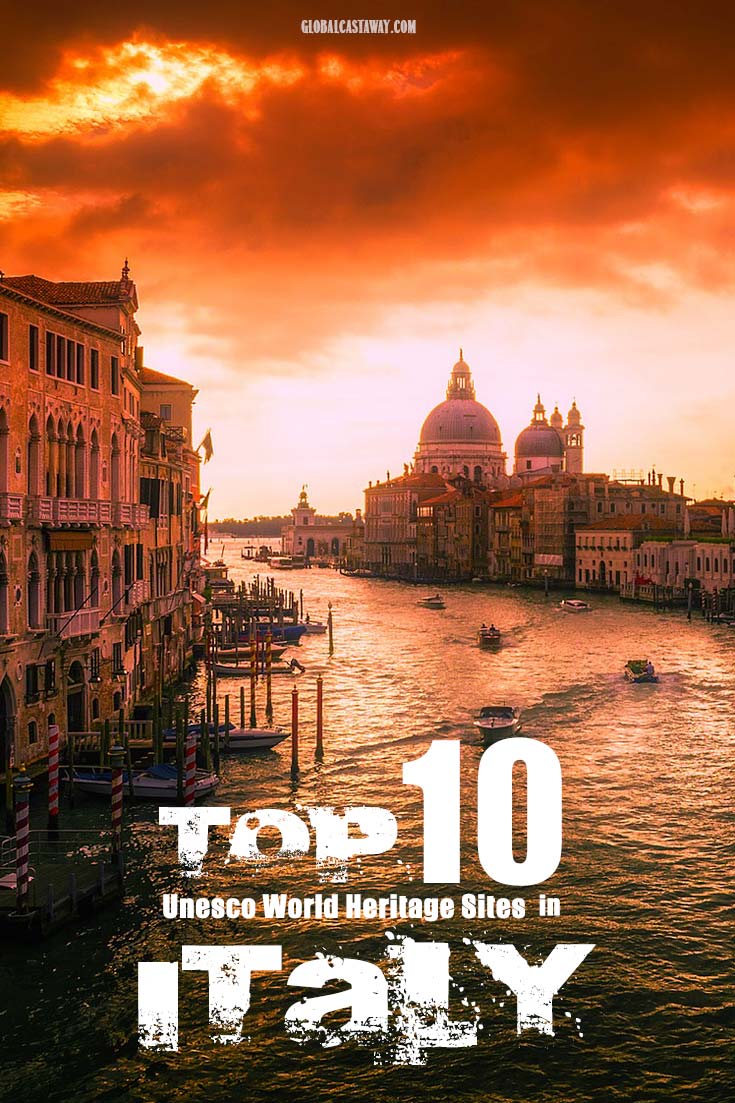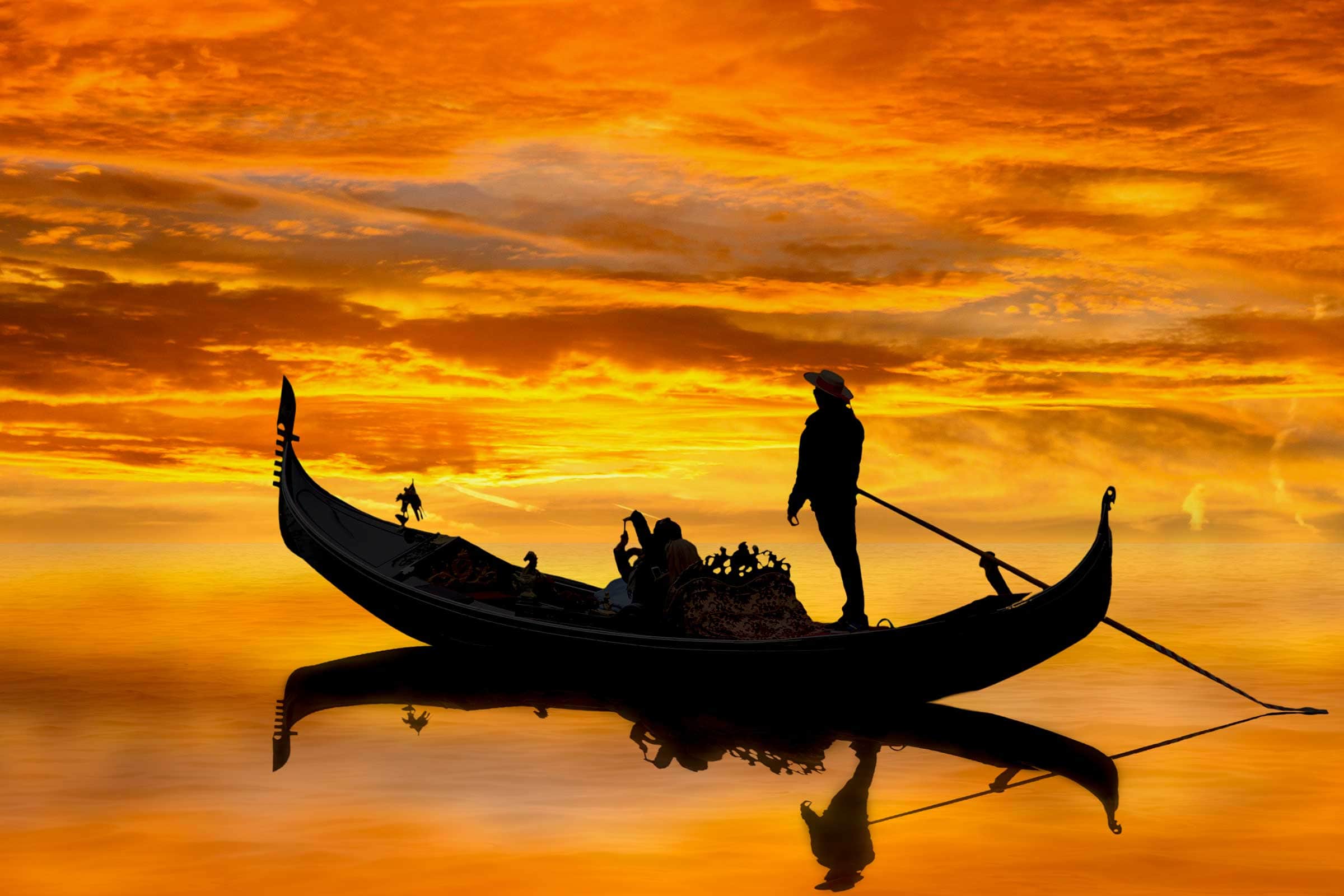There are 53 UNESCO World Heritage Sites in Italy – more than any other country in the world! From fairytale villages to art masterpieces, the boot-shaped nation has plenty to offer. But since checking all of the 53 sites would require too much time and money, so I decided to do the research for you and get the top 10 UNESCO World Heritage Sites in Italy.
* At first I tried to rank them from 10 to 1, but this turned out to be an impossible task so now they are randomly listed.
The Historical Center of Rome

Let’s start our Italian UNESCO World Heritage Sites list with the most popular place in the country. With its 4.3 million visitors every year, Rome is one of the very best vacation places in the world. And there is a good reason for that – so many incredible sites are scattered around the Eternal City that the UNESCO people have decided to enlist the whole area to their world heritage sites index.
From the iconic Colosseum to the Trevi fountain, Rome really is “a poem pressed into service as a city,” and a must-see place.
Once there, make sure to check out the Parthenon, wander inside the Roman Forum, and have the perfect Italian sunset at the top of Pinicio Hill. Also, make sure to prepare at least three days to be able to see most of the landmarks and catch the soul of the city.
See Also: The Ultimate Rome Itinerary
Cinque Terre

Even if you never heard of the name – Cinque Terre, I can bet you’ve already seen pictures of it.
The most iconic highlight of the Italian Riviera, Cinque Terre (meaning Five Lands ) are actually five fishing villages tucked between the coastal cliffs and the sea. Being accessible only by boat, rail or through treacherous mule tracks till recently, the communities have kept their perfectly preserved roads and architecture, giving you the feeling of remote authenticity.
And if you have time for only one of the five – the most instagramable place in the country (and probably the world), the village of Manarola and its pastel-colored buildings truly is the photographer’s dream.
CastawayTip: It’s way better to get there by train than a car. The roads are still pretty dangerous, and the parking costs a fortune.
Castaway Fact
It’s way better to get there by train than a car. The Roman traffic is quite chaotic, and parking costs a fortune.
The Last Supper

This Italian UNESCO World Heritage Site is not a site but it’s definitely a world heritage. Created around 1495–96 by none other but Leonardo Da Vinci, the mural represents the scene of the last supper of Jesus with his apostles, as it is told in the Gospel of John, 13:21. Been one of the most popular art masterpieces in the world, The Last Supper has frequently been referenced, reproduced, or parodied in Western culture. The list of modern artists that used is as inspiration includes names as the sculptor Marisol Escobar, Salvador Dali, and Andy Warhol.
Today the Last Supper is in the church of Santa Maria delle Grazie in Milan, and if you want to see it, you have to book your ticket well in advance. You can do it on the official site here. If there are no suitable dates, you can try to get a Milano tour that includes a visit to the church.
Alberobello

Next on our list is probably the most unique Italian town. Located next to Bari, the small town of Alberobello has the oddest shaped cute little houses you’ve ever seen in Europe – the Trulli. Unlike the traditional houses, the Trulli have a round form, they are always white, and have a cone roof made of grey stones.
To keep their white color shiny clean, the houses are whitewashed every year. A curious fact – the stones forming them are put together without mortar, but with an old traditional secret technique.
Now imagine yourself walking on cobbled paved streets with nothing but Trulli on your sides. Truly a fairytale adventure you can only experience in Alberobello.
Venice
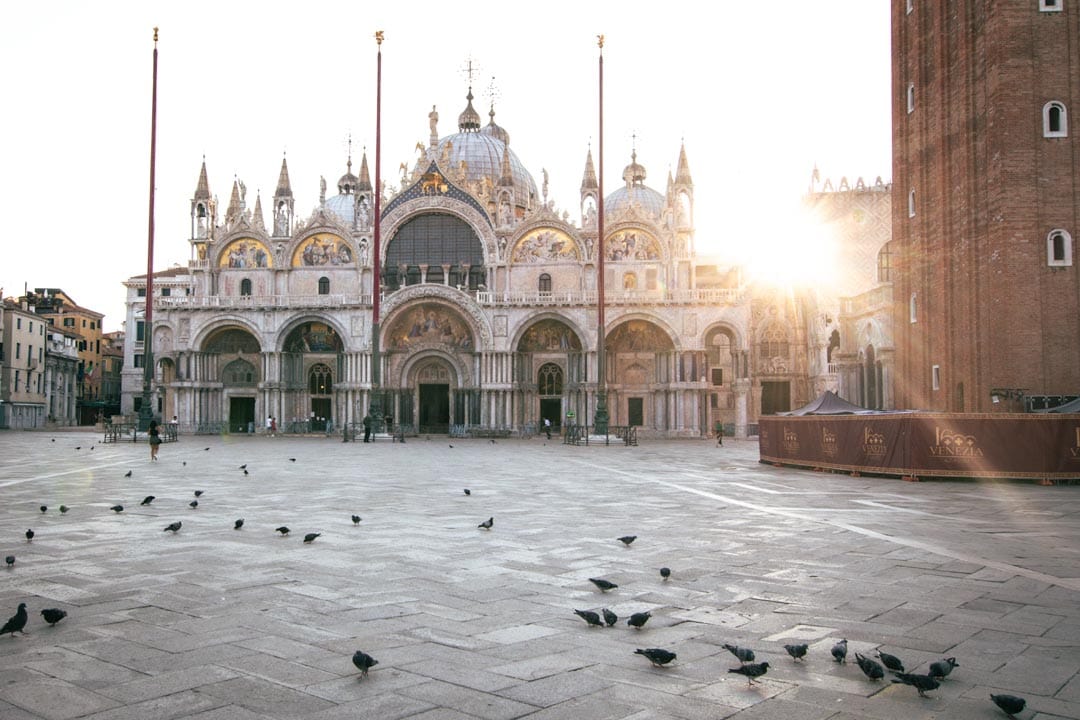
This one is probably already on your bucket list. The 1700 years old town of Venice is a stranger to no one. Being a separate country for more than a thousand years, Venice is considered to be the instigator of the Renaissance and one of the first financial centers in the world.
Part of Italy nowadays, Venice is regarded as the City of Love, and there is a good reason why. Very few things in this world could rival sharing a romantic gondola ride, with your loved one, through the astonishing Venetian canals.
Housing some of Italy’s best art museums such as La Biennale and Peggy Guggenheim’s Collection and home to the Venice Carnival, the city is one the most vivid and original spots in Europe and was inducted into UNESCO World Heritage list in 1987.
Castaway Fact
Venice is sinking 4mm per year so make sure you get there soon!
The Amalfi Coast
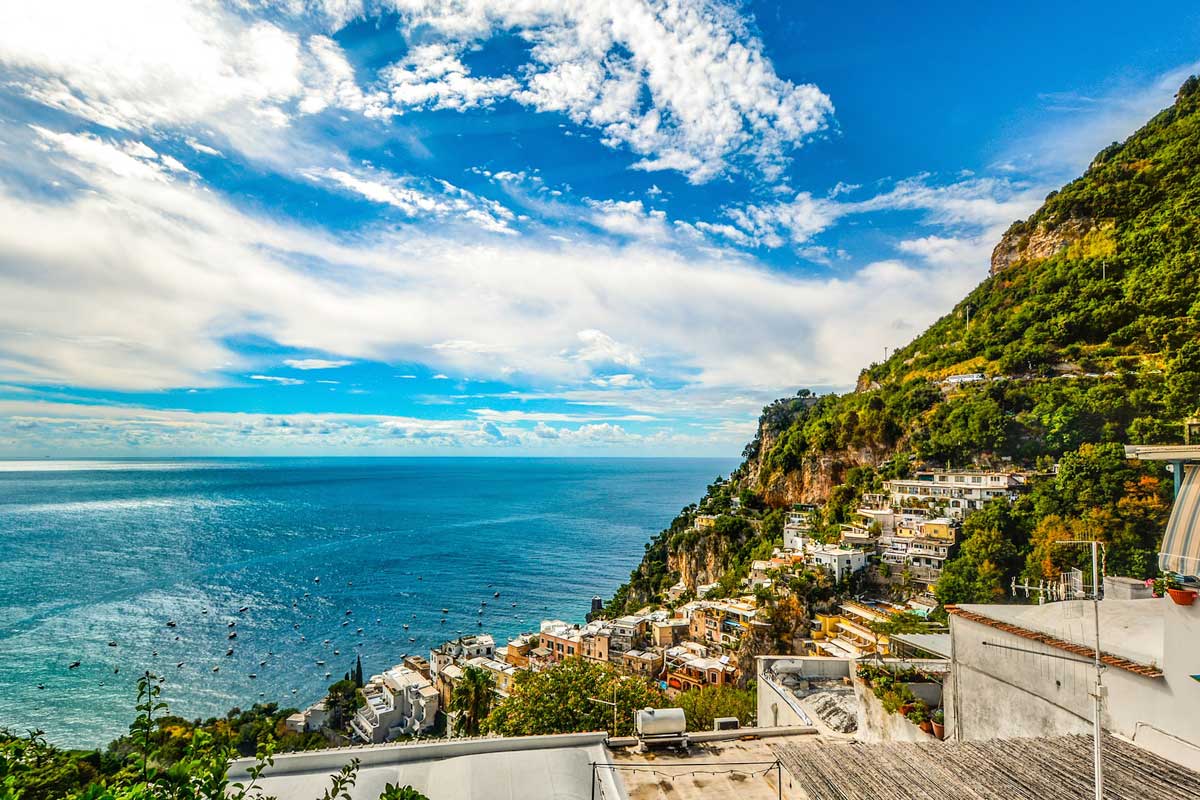
There are plenty of movies set in Italy, but the most scenic ones are always shot on the Amalfi Coast. To experience this Mediterranean treasure properly you need to take it slow. Your main priority should be finding the perfect sunbed in one of the lidos for a whole day of relaxation and finishing the day with a glass of red wine at one of the many top restaurants.
Listed as a UNESCO World Heritage Site in 1997, the Amalfi coast consists of 13 picturesque towns – all of them worth a visit. From the lemon garden terraces of Conca dei Marini to the scenic landscapes of Positano, on every corner, you’d have to pinch yourself to make sure you’re not dreaming.
Even the road connecting them is a series of postcards flashing in front of your eyes. Suspended between the blue sky and the lustrous Mediterranean waters, the Amalfi coast is the ultimate vacation area of Italy.
Florence

It’s time for the most artistic of all UNESCO World Heritage Site in Italy – Florence. Birthplace of the Renaissance and home of Leonardo da Vinci, Florence has so much history, art, and creativity floating around it streets that it’s safe to say it’s a one of a kind city!
Stroll around and see one of the replicas of Michelangelo’s David, or go to Galleria dell’Accademia to check out the original masterpiece. Breathe in the very best of the Renaissance with a visit to Italy’s most celebrated gallery – Galleria degli Uffizi or marvel at the unearthly frescoes inside the Florence Cathedral.
Get a different view of the city from the top of Basilica of Santa Maria del Fiore and Brunelleschi’s Cupola ( beware of the 463 steps though) or while strolling lazily on a boat trip on the Arno river.
Rhaetian Railway in the Albula / Bernina Landscapes

Our next Italian UNESCO World Heritage Site is not really a site again. It’s a train ride! But the Rhaetian Railway is not your regular train ride. With multiple passes over viaducts and bridges and dozens of tunnels and covered galleries, all of them in the beauty of the central Alps, this train ride is arguably the most scenic one in the world.
And the best part is- you don’t have to pay a dime! You’ve read that right. The UNESCO routes are free for everyone! Get your ticket and more information here.
Pompeii

A great tragedy saved in time, the ruins of Pompeii gives us a glimpse into the mundane life of the ancient Romans. It was 79 AD when Mount Vesuvius, a volcano near the Bay of Naples, erupted, burying the ancient city and more than 2000 of its inhabitants under a thick carpet of volcanic ash.
The city was abandoned, only to be rediscovered in 1748 by a group of explorers looking for artifacts. Imagine their surprise when they found that the volcanic ashes had acted as a marvelous preservative, freezing Pompeii in almost the same condition as it was back in 79 AD!
In the last 270 years, many archeologists have studied the site discovering buildings, frozen skeletons and everyday objects from the Roman times. They even found jars full of fruit and a loaf of bread!
No other place in the world can transfer you back in time the way Pompeii does – truly one of a kind bucket list experience.
Sassi di Matera
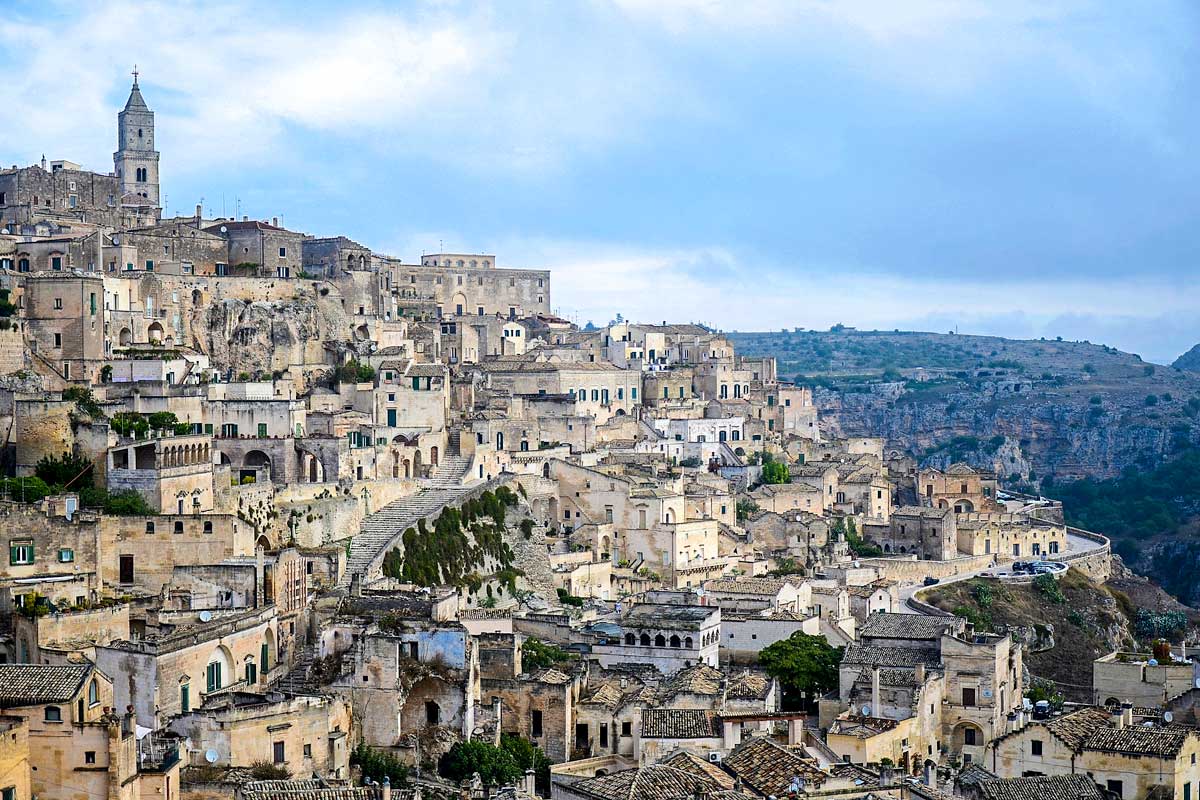
The last of our UNESCO World Heritage Sites in Italy is located in the southern part of the country, and it’s a combination of Flintstone’s Bedrock city and Gondor from Lord of the Rings. It’s believed that the cave homes of Matera were first inhabited 9000 years ago. I’ll repeat that – 9000 years! (Just for a comparison, the earliest known Egyptian pyramids were constructed 4500 years ago).
Until the later parts of the 20th century, the town of Matera was “the shame” of Italy. People lived in caves, without running water, electricity, or even sewage. It was a book written by Carlo Levi ( Christ Stopped at Eboli ) that raised awareness of the problem and forced the government to move half of the 30,000 population to new homes in the modern part of the city.
After the induction to the UNESCO World Heritage list in 1993, Sassi di Matera became a popular tourist destination. Since it’s one of the few places in the world where you can sleep, eat and even drink some cocktails in a cave, I would say its fame is well deserved.
That’s all from me, I hope you enjoy the best UNESCO World Heritage Sites in Italy!
————————————
If you haven’t planned your trip there yet, find out how I plan my trips!
————————————
I have 41 bucket list ideas for Italy. See my impossible bucket list of 1700+ adventures!
How many of those have you been to?
Some of the above are affiliate links and I will earn a percentage of the sale if you purchase through them at no extra cost to you. This helps keep my site running – so thanks in advance for your support!

